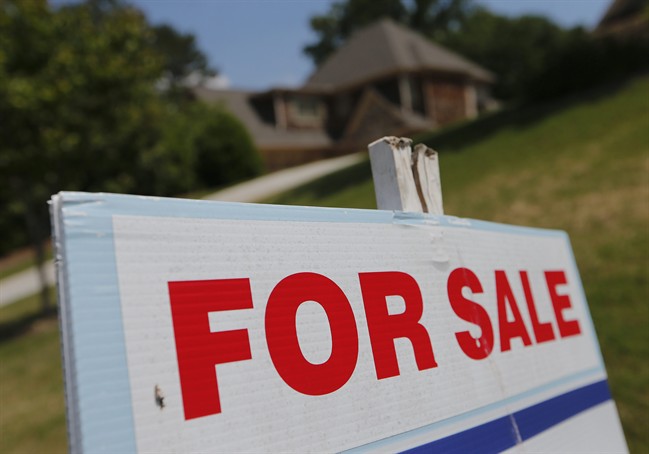Wednesday’s interest rate hike by the Bank of Canada – the first increase in nearly seven years – has Royal LePage unfazed.

“Canadian homeowners are prepared for the marginal increase in mortgage rates,” Phil Soper, the company’s president and CEO, said in a housing survey released Thursday.
READ MORE: Mortgage calculator: See how rising interest rates affect your payments
The fact that the central bank raised rates is a signal that economic growth is robust, the report goes on to note. “We believe that the market is better served by a healthy economy that requires a return to normal conditions.”
Nor does Soper see the prospect of another rate increase, which could come as early as September, triggering a rush by prospective homebuyers to make a purchase and lock in a fixed interest rate on their mortgage.
READ MORE: How the Bank of Canada’s interest rate hike affects your wallet
Such a rush never materialized in the immediate aftermath of the financial crisis, when many thought rates would climb back up just as quickly as they had come down at the onset of the Great Recession.
If Canadians didn’t panic then, Soper reckons, they won’t think much for the current cycle of rate hikes, which is widely expected to be slow and gradual.
Still, Soper’s views are based on the expectation that interest rates won’t rise beyond 1 per cent over the next year and a half (up from 0.75 per cent today and 0.5 per cent until Tuesday).
That assumption differs from what some of the big banks are forecasting, with Royal Bank and Bank of Nova Scotia, for example, indicating that a hike to 1.5 per cent by the end of 2018 is possible.

Get weekly money news
WATCH: What are interest rates?

The outlook for the second half of 2017
The price of a home in Canada climbed to $609,144 between April and June compared the same period last year – a jump of nearly 14 per cent.
The market won’t be able to keep up that pace in the second half of the year, but prices will still be rising, according to Royal LePage.
READ MORE: What you need to know about mortgages if interest rates rise
The company forecasts the national aggregate price of a home to $617,773 by the end of 2017, a 9.5 per cent increase for the year compared to 2016.
Here’s the city-level breakdown:
Greater Vancouver home sales fell off a cliff in late 2016, after the B.C. government introduced a tax on foreign homebuyers. But the market seemed to turn a corner in the second quarter (April to June) of 2017. Overall, Royal LePage expects to see a low single-digit price increase in 2017.
In Calgary, a typical home now costs $472,798. Prices were up 4.4 per cent in the second quarter compared to the same period in 2016, the strongest year-over-year gain since the oil price shock. In Edmonton, prices climbed 3.8 per cent to $387,989. With the provincial economy recovering, Royal LePage sees low- to mid-single-digit price increases by the end of 2017.
Editor’s note: a previous version of the following paragraph incorrectly stated that prices in Regina and Saskatoon rose slightly. In reality, both cities posted small declines.
Prices were virtually flat in Regina and Saskatoon, down 1.3 and 1.7 per cent to $325,927 and $379,864, respectively. The market will likely continue to flat line for the remainder of 2017.
Much the same holds for Winnipeg, where prices moved a mere 0.2 per cent year-over-year to $281,568. That pace might pick up slightly in the second half of the year.
READ MORE: Home prices to remain flat across Canada in 2018, says RBC – is this the new normal?
In the Greater Toronto Area prices rose by an eye-popping 24 per cent, to $837,232, during the April-to-June period compared to the same three months in 2016. But Royal LePage expects a significant slowdown in the second half of the year, with property values up 18.5 per cent (to $862,264) in 2017 compared to 2016. Activity has already slowed down. “For the first time in years, buyers are able to include reasonable conditions in their offers and multiple bid situations are somewhat less frequent,” Soper noted in the report.
The Greater Montreal area saw prices rise 6.2 per cent to $372, 071 in the second quarter. The city will continue to see “healthy home price increases,” as the provincial economy keeps humming.
Fredericton posted one of the highest increases in Atlantic Canada, up 2.7 per cent to $245,150.
Halifax and Charlottetown showed modest gains of 1.9 per cent and 1.8 per cent, respectively, to $302,469, and $228,352.
In St. John’s prices slipped 3.1 per cent year-over-year, down to $320,164, and will likely continue to fall in the second half of the year.








Comments